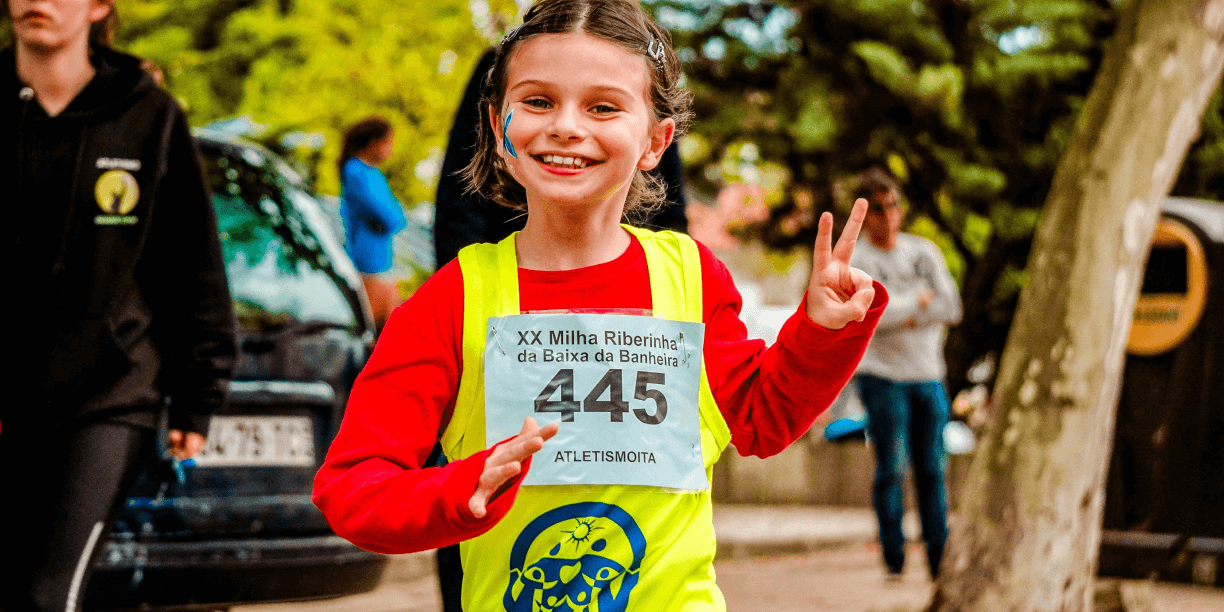How to plan a successful charity run/walk event [6 steps]

Planning a charity run/walk is one of the most rewarding ways a nonprofit organization can bring a community together around a good cause. Whether organizing a casual fun run, a 5K run/walk, or a half marathon, these events energize supporters, raise funds, and increase visibility for your mission.
We’ll take you step-by-step through planning a fundraising event that delivers on impact, experience, and efficiency—whether hosting your first one or looking for ways to take your experience to the next level.
Start with the big questions
Before you dive into logistics, take time to clarify your vision. A successful run/walk starts with strong answers to the following:
- What cause are you raising money for?
- Who is your audience—families, competitive athletes, or both?
- Why is an endurance event the right event type to help you achieve your goals?
- What are your fundraising goals?
- How many participants do you expect?
These early decisions will shape your budget, entry fees, location, sponsorship strategy, and registration process. Be specific. A clear purpose makes it easier to attract sponsors, inspire participants, and keep your planning team focused.
Define your fundraising strategies, budget, and registration process
Now that you have a vision, it’s time to align your finances with your goals.
Build your budget
Identify all potential expenses:
- Permit fees
- Venue rentals
- Race bibs and T-shirts
- Signage and timing equipment
- Water stations and snack tables
- First-aid and cleanup crews
- Marketing materials and social media promotions
Outline your fundraising strategy to offset expenses
Plan your income sources:
- Registration fees
- Peer-to-peer fundraising pages
- Business sponsorships
- In-kind donations (like T-shirt printing and bottled water)
Keep your expenses lean and focused so more dollars go toward your fundraising goal. And if you host an annual event, use data from previous years to refine your budget.
Set up your registration process
Use a mobile-friendly online platform that captures key info, like T-shirt sizes, phone numbers, and emergency contacts. Offer early-bird pricing to encourage early sign-ups and allow time to order accurate T-shirt quantities. Whether planning a walk-a-thon or a 5K run/walk, keep the entry fees accessible while aligning with your fundraising target.
Clearly explain the registration fee and what people get in return—like a race-day T-shirt, water station access, or post-race refreshments at the finish line.
Plan logistics and details
A great endurance event depends on strong logistics and clear planning. Start 4-6 months in advance, especially for in-person events held in public spaces.
Choose a location and route
Safety, accessibility, and atmosphere matter. Look for a venue that can accommodate your expected number of participants and provide a scenic or meaningful backdrop. A local park, school campus, or community trail could work well for a mile walk or full 5K run/walk.
Secure permits and insurance
Contact your city’s parks department or public works office to learn what’s necessary for the event. You also may need to coordinate with local police or emergency services and show proof of insurance.
Assemble a planning team
Divide responsibilities:
- Logistics and permits
- Sponsorship and fundraising
- Volunteer coordination
- Marketing and promotion
- Participant experience
Assign clear roles and meet regularly. Use a planning calendar or shared task list to stay organized.
Recruit volunteers
Volunteers are vital on the day of the event. They can assist with setup, check-in tables, water stations, finish-line cheering, and breakdown. The more prepared your volunteers are, the smoother the race day will run.
Consider hybrid or virtual options
For a broader reach, offer a virtual walk event where participants complete their mile walk or fun run remotely. This is great for including people who can’t attend in person but still want to support your nonprofit.
Promote the event with peer-to-peer fundraising
Promotion can make or break your turnout. Give people plenty of time to register and get involved.
Create a strong marketing plan
Start early and promote consistently across multiple channels:
- Social media posts and event pages
- Email newsletters
- Flyers at local businesses, libraries, and gyms
- Press outreach to local media
- Partner organizations and community calendars
Highlight your fundraising goal and how participants help your nonprofit reach it. Use storytelling, impact statistics, or testimonials to show what their support makes possible.
Empower fundraising through participants
Encourage people to create fundraising pages directly from your peer-to-peer campaign to raise money from their networks. This multiplies your reach and brings in more donations beyond the registration fee.
You can also encourage additional fundraising by inviting supporters to start fundraisers directly from your GoFundMe Nonprofit Page, tapping into the power of a community of nearly 200M.
Support fundraisers with:
- Sample posts and email templates
- Clear instructions for setting up pages
- Recognition for top fundraisers
- Incentives (like prizes or shoutouts)
This approach turns each participant into an ambassador for your cause and boosts your results significantly.
Manage the big day
Race day requires attention to detail. A smooth experience ensures participants feel good about coming—and coming back next year.
Create a run-of-show timeline
Plan every step, from setup and check-in to water breaks and awards. Assign volunteers to key areas like:
- Registration tables
- Mile markers or route stations
- First-aid support
- T-shirt pickup
- Finish-line energy crew
Keep check-in quick and welcoming
Have enough volunteers to manage lines, answer questions, and distribute materials, like race bibs and T-shirts. Make sure signs clearly indicate where to go.
Build a fun finish-line experience
Celebrate each participant. Include music, photos, awards, or refreshments. Make it memorable and mission-driven with banners or posters that share your impact.
Cross the finish line
Once the race ends, your final job is to close the loop and celebrate the success.
Thank everyone
Send thank-you notes or emails to:
- Participants
- Donors
- Volunteers
- Sponsors
Be specific about the impact of their involvement—how much you raised, how many people attended, and how the funds will support your nonprofit’s work.
Share highlights
Post photos from the day of the event, recognize top fundraisers, and reshare social media posts. Tag local businesses and community partners that contributed.
Collect feedback and reflect
Ask your planning team, volunteers, and participants what worked well and what to improve. Document lessons learned while it’s still fresh to set yourself up for success next year.
Energize supporters, raise funds, and increase visibility for your mission
A charity run or charity walk is more than a fundraising event—it’s a platform for connection, awareness, and action. When your nonprofit organization plans with intention and clarity, your event can inspire participants, attract media attention, and raise funds to grow your impact.
Whether organizing your first walk-a-thon or turning your fun run into an annual event, GoFundMe Pro gives you the right structure and strategy to make all the difference.
Connect with us today to get started planning your first (or next) successful charity run/walk.
Copy editor: Ayanna Julien
Subscribe to the GoFundMe Pro blog
Get the latest fundraising tips, trends, and ideas in your inbox.
Thank you for subscribing
You signed up for emails from GoFundMe Pro
Request a demo
Learn how top nonprofits use GoFundMe Pro to power their fundraising.



